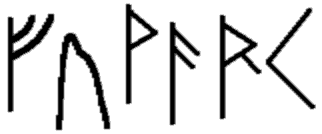

Information: The USA is only 200 years old.
Translation: The USA is one of the oldest nations in the world. Britain is older and possibly France depending on how you look at French history. Germany is about 50 years younger than the USA. Modern history books label areas in the world by their current national names, which helped foster the misconception that the USA is a young country. Europe for example was made up of small local fiefdoms that would then join together with other fiefdoms under a king or a duke. The large cities were generally self-governing. WWI and WWII were in many respects wars of national construction. The current breaking up of Yugoslavia is just a continuation of the nationalization of Europe that became Europe's main political force in the 1800's.
Information: Self-organization is built into the structures we live in.
Translation: This is an idea that is used in many sciences to explain how real life organizations come about such as ecological systems, countries, governments, and biological life. This idea develops when you consider that if you have a random group of things that can join together in only a few select ways the random group becomes organized. A way to see this is to look at a component made up of buttons and thread. Let's start with a group of 50 buttons. The buttons represent a random grouping of things. Things like people, creatures, or organic chemicals. We take a thread and tie two random buttons together. We would then have two linked buttons and 48 individual buttons. We will do the tying together of two random buttons 5 more times. We would then have a group of 6 pairs and 38 individuals. At 10 random pairings we might have 7 pairs of buttons, 2 triplets, and 30 individual buttons. In other words the group of buttons hasn't changed much. But after we get past tying 25 threads to buttons or half the number of buttons, most of the buttons become linked into a big component. It has become organized into something other than just buttons and thread but a component made up of buttons and thread. After let's say 27 threads are tied you could pick up one button and pull up as many as 46 of the original 50 buttons. This sudden jump from random individuals to a large organization is used to explain how the world around us organizes itself. How an area filled with farmers becomes tied together by the energy of a river to become the Egyptian Empire. Or how a group of creatures tied together by a mountain valley becomes an ecological community.
Information: One of my favorite math problems is about 3 men and a monkey. Three men become shipwrecked on a desert island. They each go off in a different direction to explore the island and collect coconuts for food. They meet back late in the day very tired. They decide to gather all the coconuts in a pile to be divided in the morning. One of the men wakes up at midnight. He decides he doesn't trust the other men so he takes and hides half of the pile of coconuts plus a half a coconut. The second man wakes up at about 3 o'clock in the morning and takes half the pile of coconuts plus a half a coconut. The last man wakes up just before dawn. Seeing how small the pile is he takes half the remaining coconuts plus half a coconut. All the men then wake and they begin to argue over the coconuts. While they are arguing a monkey comes along and steals the last coconut. How many coconuts were in the pile to start with?
Translation: Most people reading the problem realize that there is enough information in the problem to solve it. They just don't know how to go about solving it. The translating of the information into steps to solve it is not easily seen. The words disguise the answer. Just like the words in the previous examples disguise the information. We start with what we know. There was 1 coconut left in the pile for the monkey to take. If the third man took half plus a half and left 1 coconut for the monkey how many coconuts were in the pile for the third man? Let's try 2 coconuts in the pile. If he took half the pile or 1 coconut plus a half a coconut that would leave ½ a coconut for the monkey. So we try 3 coconuts. Half the pile would then be 1 and ½ coconuts. So if he took another half a coconut he would have 2 coconuts leaving 1 for the monkey. Using the same logic the second man would have a pile of 7 coconuts and his half plus a half would then be 4 coconuts. The original pile would then be 15 coconuts with the first man taking 8 coconuts for his own.
Translating is what we all do. It is the explaining of information by someone who understands both the information and who is listening. It is a skill that can save time and open up new ways of solving a problem. In its most pure form it is called teaching. In its most useful form it is referred to as a reference source. I call it translating.
I do translating.